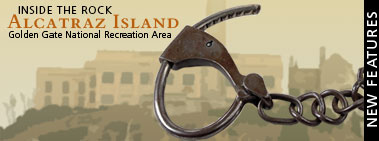
Laws, Regulations, and Conventions
Related to the Environment
Laws
Lacey Act of 1900 (18 USC 43-44)
This act makes the violation of any state, federal or foreign wildlife law a federal offense and places stipulations on the importing and labelling of wildlife (e.g., birds and mammals) and their parts. It poses complex problems for museums in relation to the acquisition, deaccession and sale of wildlife materials in museum shops because it is hard to prove the legal history of such pieces. Enforcement of the Act requires proof of intentional violation, but ignorance of the relevant state, federal or foreign statutes is not excusable. The Black Bass Act of 1930 (16 USC 851) added fish to the list of wildlife under the Lacey Act.
Migratory Bird Treaty Act of 1918 (16 USC 703-711)
Enacted to protect birds flying between the United States and Canada, this Act was later expanded to include Mexico and Japan. It covers all wild, native birds not legally hunted by state law. Some non-native species may be covered by state law and, therefore fall under the domain of the Lacey Act. This Act makes it illegal to kill, capture, collect, possess, buy, sell, ship, import or export listed species including their parts, nests and eggs. Museums and non-commercial institutions can get permits for legal possession, collection and transportation of such objects but permits impose extensive record-keeping requirements. Only museums and other specified institutions can purchase any protected bird or part thereof, and the seller must possess a federal permit for a legal sale.
Bald Eagle Protection Act of 1940 (16 USC 668-668d)
Amended in 1962 to include golden eagles, this act prohibits taking, buying, selling, trading, possession, importation or exportation of eagles or their parts, nests, eggs or products made from them. It does, however, authorize permits for taking, possessing and transporting eagles and their parts for scientific, exhibition and Indian religious purposes. Possession and transportation of eagles held since before the act require no permits, but museums need permits for any materials acquired subsequently.
Marine Mammal Protection Act of 1972 (16 USC 1361-1407)
This act places a moratorium on the killing of marine mammals by United States citizens and restricts the possession, sale, purchase, importation or transportation of the animals and their products and parts. Permits are available for exhibiting marine mammals and their parts and for holding them in storage. However, native peoples can use such parts for the manufacture and sale of handcrafts as long as the sale is handled by a licensed dealer.
Museums do not need permits for pre-Act materials or to purchase legitimate handcrafts. However, they should consider obtaining permits for all other marine mammal materials.
Endangered Species Act of 1973, as amended (16 USC 1531-1543)
This act makes it illegal to harass, harm or kill listed species and to use, buy or sell the species or parts thereof in the course of an interstate commercial activity. Intra-state transactions are allowed if pre-Act ownership can be proven.
Although the Act does not apply to fossils and objects greater than 100 years old, age must be meticulously verified. Park museums must have a permit to purchase more recent objects that contain parts of endangered or threatened species.
Gifts of endangered or threatened specimens to museums are allowed if there is proof of pre-Act ownership and if the objects have not been offered for sale since the date of this Act. Loans or gifts between educational institutions are allowed. In such instances permits are not required, even if the objects cross state lines.
Regulations
"Research Specimens" (36 CFR 2.5)
[National Park Service Act of 1916] States conditions under which park superintendents may permit collection of plants, fish, wildlife, rocks, and minerals, including museum catalog requirements.
"Endangered and Threatened Wildlife and Plants" (50 CFR 17.11 and 17.12)
These annually revised sections provide lists of names of all the species of wildlife and plants determined to be endangered or threatened.
Conventions
1983 Convention on International Trade in Endangered Species of Wild Fauna and Flora CITES
This worldwide effort to protect endangered species of plants and animals by regulating imports and exports was first ratified in 1977 and had been joined by 50 nations within three years. It allows for certificates of exemption for the import or export of items acquired before CITES, and for non-commercial exchange between institutions.
The convention deals with three appendices that protect materials of varying degrees of scarcity:
- Appendix I Species are in danger of extinction and there is not commercial trade in them. Any international transport of these materials requires permits from both the exporting and importing nations.
- Appendix II Species require strict regulation to prevent the danger of extinction and/or look like Appendix I species. Permits for international transport are issued by the exporting nation, and are allowed for any purpose not detrimental to the species.
- Appendix III Species are protected only within their native countries. They require permits for export even if they are plentiful elsewhere.
Note: There may be a lag between the passage of laws and updates listed on linked non-NPS sites. USC is the U.S. Code; while CFR is the Code of Federal Regulations.
|





